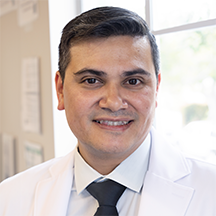
Sinonasal Carcinoma
Many sinonasal carcinomas warrant endoscopic endonasal biopsy or removal
Sinonasal carcinomas arise from the nasal sinuses and skull base region.
The optimal treatment for many patients with sinonasal carcinoma is maximal surgical removal followed by radiation and in some instances chemotherapy. In other cases, biopsy followed by radiation and chemotherapy is the optimal treatment. Fortunately, the majority of such cancers can be approached and removed via the nose using an endoscopic endonasal approach.
At Pacific Pituitary Disorders Center. located in Santa Monica, CA, we have a large experience in the surgical treatment of these sinus and skull base tumors. By incorporating cutting edge technology and instrumentation with proven surgical experience, we make surgery safer, less invasive and more effective.
Our neurosurgeons and ENT surgeons work closely with our radiation oncologists, medical oncologists and neuropathologists to design the optimal treatment plan that incorporates the latest in radiotherapy techniques and tumor biomarker studies. By using comprehensive tumor histological sub-typing and genomic sequencing, we are able to provide a personalized therapeutic approach for each patient.
Primary neoplasms of the sinonasal region, including the sphenoid sinus are relatively uncommon and include a wide range of pathologies including sinonasal undifferentiated carcinoma (SNUC), squamous cell carcinoma, giant cell tumors, neuroendocrine tumors, mucoepidermoid carcinomas and lymphomas as seen in our Recent Article on this topic. These tumors tend to be locally invasive and can extend into the nasal cavity and orbits as well as the skull base to involve the cavernous sinus, Meckel’s cave, sella, clivus and cribiform plate areas; some large aggressive tumors also have intradural extension impinging upon the brain and/or cranial nerves.
Sinus carcinomas typically cause epistaxis (nasal bleeding), facial pain, cavernous sinus symptoms (double vision or facial numbness) and headache. Tumors that grow into the sellar/pituitary region may cause symptoms of Pituitary Failure (Hypopituitarism).
These tumors are typically diagnosed by magnetic resonance imaging (MRI) or computer tomography (CT) of the brain and paranasal sinuses.
The aggressive nature of most sinonasal carcinomas typically warrants multimodality treatment including surgical resection and radiotherapy, as well as chemotherapy in some cases. The exact treatment regimen is highly dependent upon the exact pathology. Given advances in endoscopy, instrumentation and anatomical understanding, many if not most sinus carcinomas are now removed or debulked via an Endoscopic Endonasal Approach, including those with intradural and/or orbital extension.










